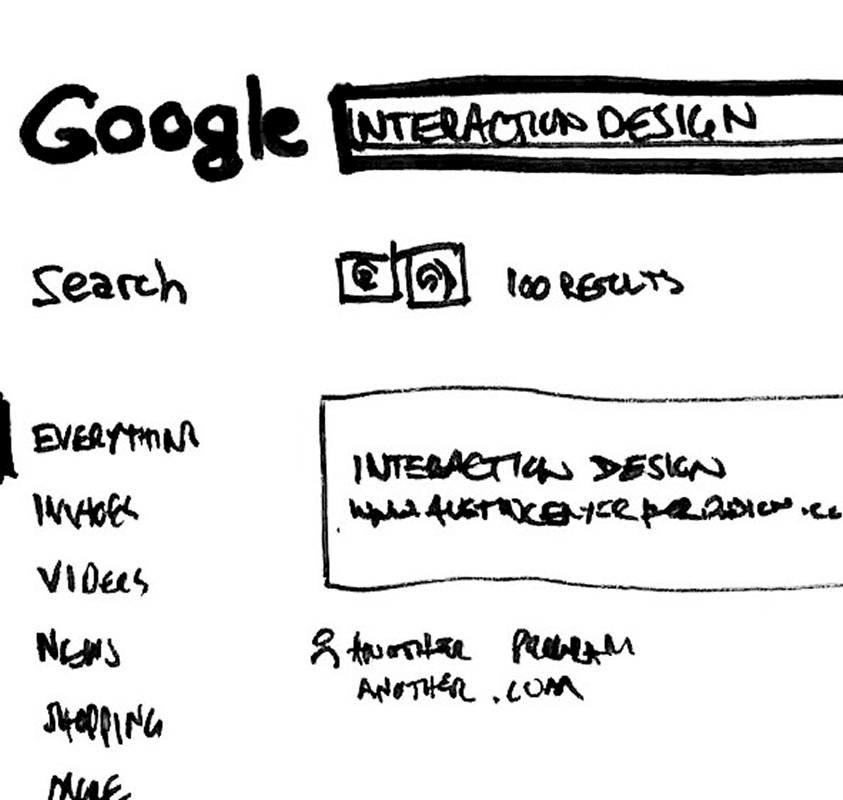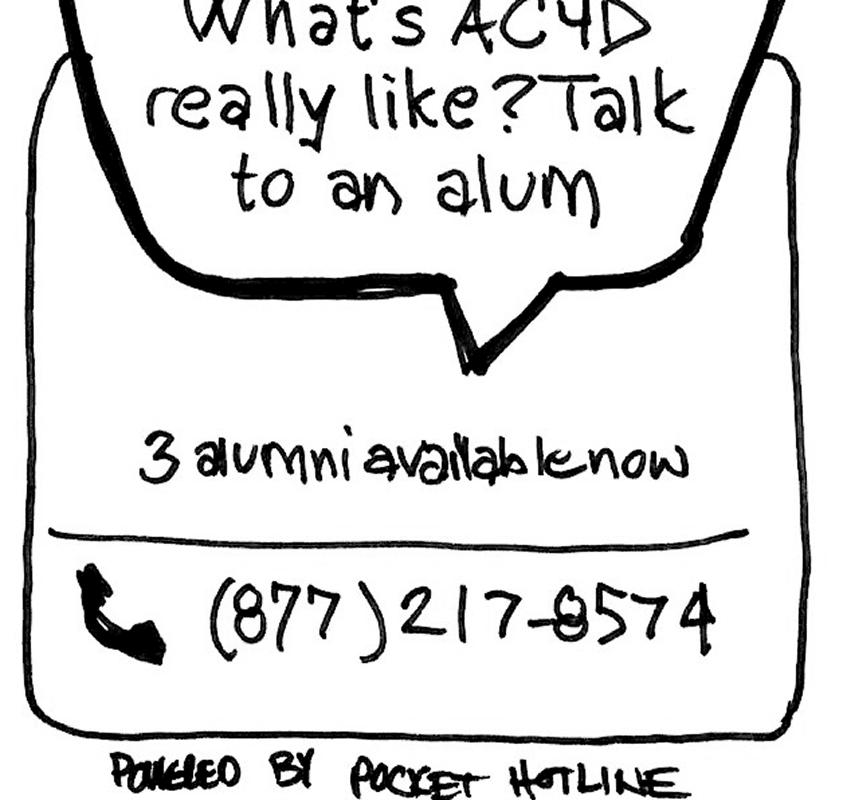You are reading the book Wicked Problems, published by Jon Kolko in 2011.
Methods for Creating New Designs
Storyboard
What is it?
A storyboard is a visual representation of a scenario. Much like a comic strip, a storyboard combines multiple elements into a visual narrative. These elements include the following:
Scenes: The storyboard contextualizes events in their environment, showing the physical, geographic, or cultural backdrop that helps dictate how people respond to those events.
Actors: The storyboard represents different stakeholders in a situation and how they'll act according to their character "type." For example, someone in an authoritative position will credibly dictate strategy or large-scale direction.
Products: The storyboard embeds products—both physical and digital—into the context and illustrates how actors respond to using them. For example, to illustrate a problem scenario, you could include tiny representations of actors frustrated by broken products; to illustrate a future scenario of success, you would show tiny happy actors using functional products.
Services and Policies: The storyboard also describes the existing service infrastructure—the rules, policies, and guidelines that determine how people act and how they respond to different events.
Because of the storyboard's visual quality, the tool is compelling, evocative, and easy to understand—making it ideal for collaborative design efforts with nondesigners or a nontechnical audience.
 Jim is fed up at his job and is thinking that it's time for a career change.
Jim is fed up at his job and is thinking that it's time for a career change. As he googles around, he learns about interaction design, and sees a sponsored link for Austin Center for Design.
As he googles around, he learns about interaction design, and sees a sponsored link for Austin Center for Design. He explores the site, and learns about some of the previous projects.
He explores the site, and learns about some of the previous projects. He wants to learn more, and sees the link to chat with an alumni on the phone. He gives it a try.
He wants to learn more, and sees the link to chat with an alumni on the phone. He gives it a try. He's connected with Chap Ambrose, an alumni. They talk about the program together.
He's connected with Chap Ambrose, an alumni. They talk about the program together.How do I do it?
Read through the narrative you created in scenario planning (above) to determine the best direction for the storyboard.
Create an empty storyboard by drawing a series of 4" squares in a long, horizontal strip. Use a large sheet of paper; newsprint, sold in rolls, works well.
Under each square, write one sentence from your narrative.
In each square, sketch the sentence. Because this is a generative activity, the focus should be on the quality of the idea, not necessarily the quality of the visualization. As you sketch the sentence, consider these key points:
- What actions are plausible, given actors' circumstance, background, technical acumen, incentive structure, and interest in the topic? For example, your scenario would not depict an actor who has no technical skills as understanding how to use a complex software program the first time he encounters it.
- What products, services, systems, and other artifacts are being introduced? Use the storyboard to emphasize what these items look like.
- When you show a product, draw it big enough to fill the square. By sketching the product as large as possible, you are beginning to make implicit design decisions, which help minimize the difficulty in further design iterations. For example, if a user encounters a piece of computer software, treat the square as the monitor, and draw what the user would see on it. But even the full square isn't big enough for tiny details, so you'll be forced to simplify user-interface elements rather than rendering them perfectly.
- To show an exchange of information, goods, policies, or decisions between two people, include both people in the square. If the people are in different physical locations, use a horizontal line to divide the square in two. If more than two people are sitting around a table, show as many of them as you can. By visualizing these interactions, you begin to establish the collaborative and workflow constraints around your solution.
- Each time you introduce a product, service, system, and other artifact, add visual clarity to that element by increasing the line weight or adding more detail to the sketch.
When should I use it?
Use a storyboard as a bridge between high-level design ideas and preliminary product artifacts (such as wireframes, concept sketches, service blueprints, etc.). Typically, a storyboard is informed by research and builds on existing design concepts and inspiration, so it can be used once the design team has identified the "big idea," a compelling design-driven intervention.
What is the output, and how can I use it?
The output of a storyboard is a tangible representation of a story's words and ideas.
Where can I learn more?
Read the book Exploring Storyboarding by Wendy Tumminello.
